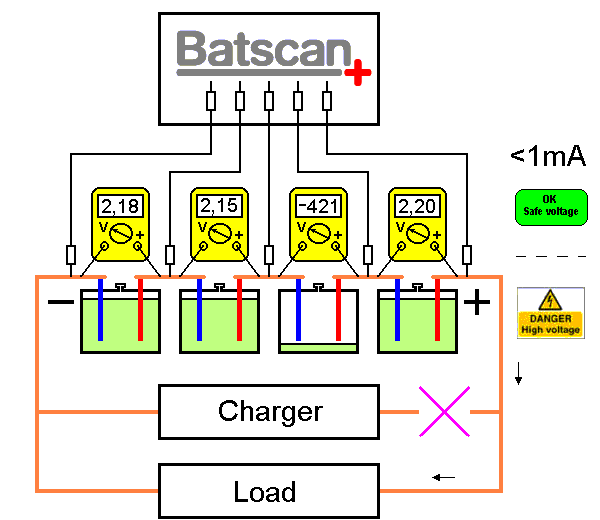 |
| ||||||
Safety first !
Without the protective resistors it would be hazardous to touch the measuring leads, However, with the resistors the current will be limited to a save level. Batscan was developed taking highest possible safety into consideration. AT&T’s primary requirement for a Battery Monitoring System was safety. First, the system could not pose any hazard to a person coming in touch with any parts of it. Second, a short-circuit must not result in heat release or spark formation. Batscan complies with these requirements due to the fact that all connections to batteries are done through high value resistors which limits short-circuit current to less than 1mA. AT&T: "Foolproof is not enough, it must be idiot-friendly." There are several reasons for using a protective resistor:
Of all requirements one has on a Battery Monitoring System the protective resistor has to be number one. After all, it is far more important that the system is safe than anything else. |
